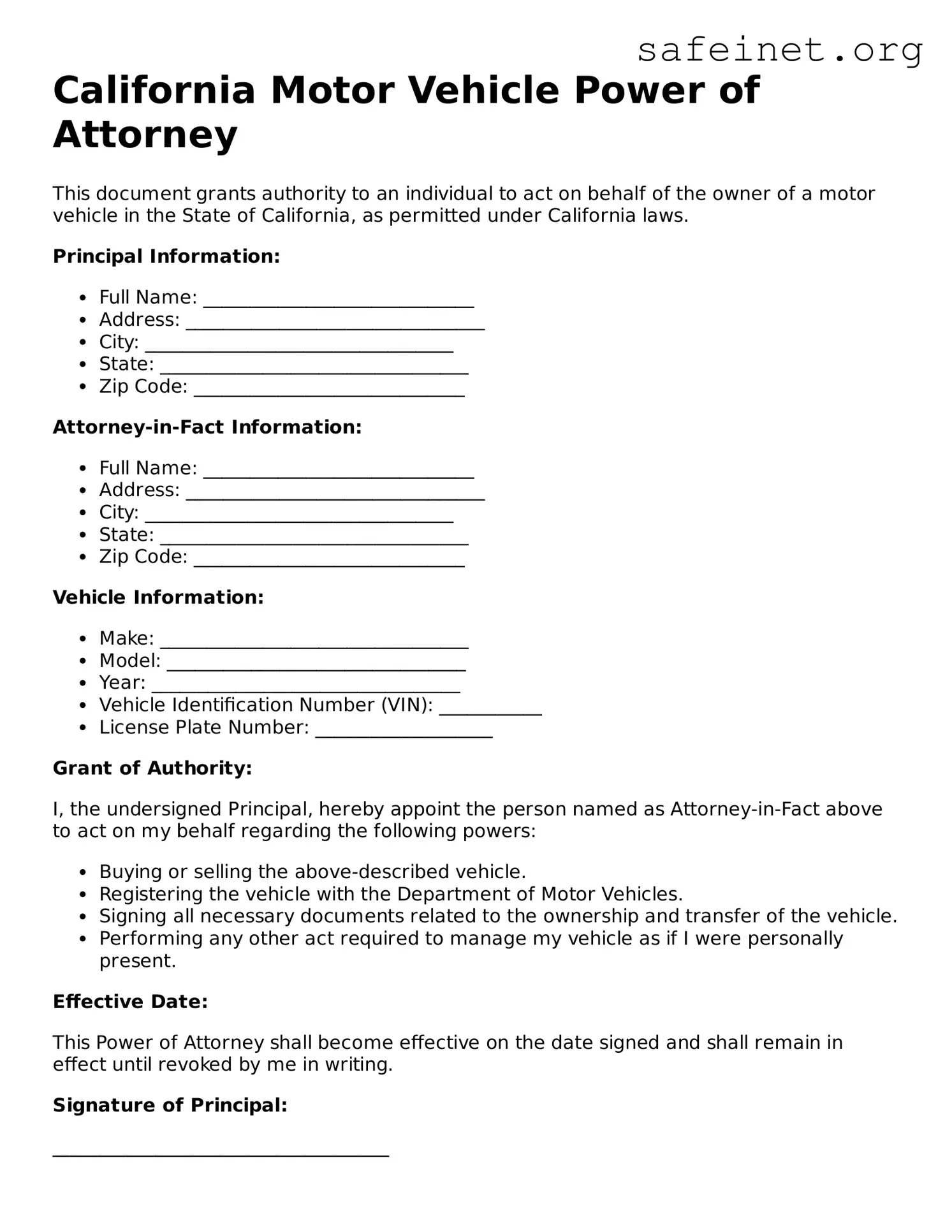What is the California Motor Vehicle Power of Attorney form?
The California Motor Vehicle Power of Attorney form is a legal document that allows an individual, known as the principal, to grant authority to another person, referred to as the agent or attorney-in-fact, to act on their behalf for specific matters related to motor vehicles. This may include tasks such as transferring ownership, registering a vehicle, or obtaining a duplicate title. The form helps facilitate these processes by providing the agent with the official power to execute necessary paperwork and represent the principal in vehicle-related transactions.
Who can be designated as an agent in the Motor Vehicle Power of Attorney form?
Any competent adult can be designated as an agent in the California Motor Vehicle Power of Attorney form. This could be a family member, friend, or even a professional, such as a lawyer or a trusted financial advisor. It is essential that the agent is trustworthy, as they will have the authority to make decisions regarding the principal’s vehicle and related transactions. Always consider the specific abilities of the person you choose to ensure they can competently manage the responsibilities assigned to them.
How do I complete the Motor Vehicle Power of Attorney form?
To complete the form, start by entering the date and the principal’s information, including their full name and address. Next, you will designate the agent’s information—this includes their full name and address as well. Clearly define the powers being granted, whether general or specific, and include any limitations if desired. Lastly, both the principal and the agent must sign and date the form, and it is recommended to have the signature notarized to verify authenticity. Ensure that all information is accurate to avoid complications in the future.
Is notarization required for the Motor Vehicle Power of Attorney form?
While notarization is not explicitly required by California law for the Motor Vehicle Power of Attorney form, it is strongly encouraged. Having the document notarized adds an extra layer of verification, reducing the risk of disputes regarding the authenticity of the signatures. Notarization ensures that the principal is willingly granting authority to the agent without any coercion or undue influence. Always check with the specific entity that may be processing the power of attorney to see if they have any additional requirements.
Can I revoke a Motor Vehicle Power of Attorney once it is in effect?
Yes, a principal can revoke a Motor Vehicle Power of Attorney at any time, as long as they are competent to do so. To revoke the authority granted, the principal should notify the agent in writing and may also want to complete a formal revocation form. It’s essential to provide copies of the revocation notice to the relevant authorities, such as the Department of Motor Vehicles (DMV), to ensure all parties are informed. This step helps prevent the agent from acting on behalf of the principal after the revocation has taken effect.
